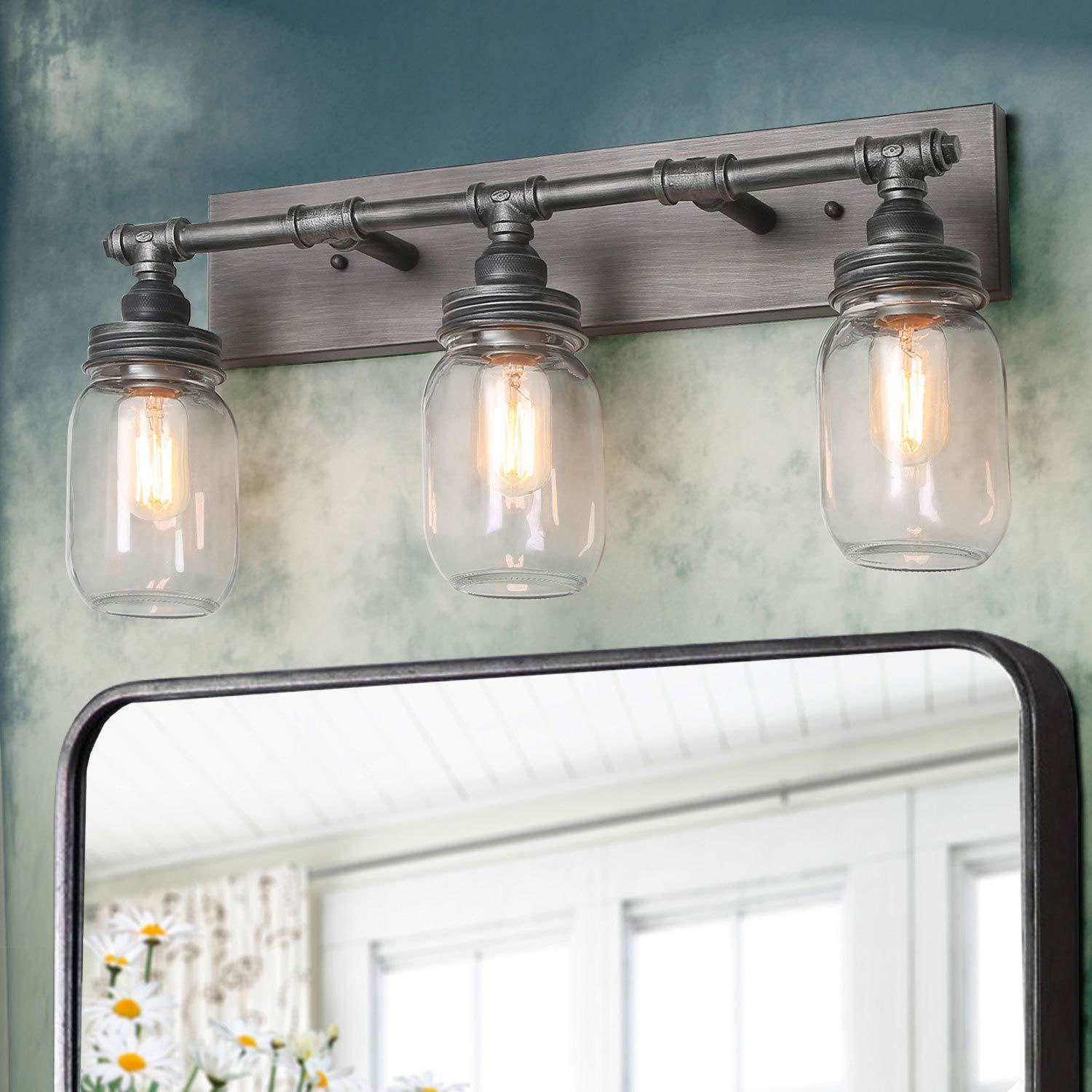Design Features

Rust resistant bathroom vanity lights – Rust resistance in bathroom vanity lights is a crucial consideration due to the humid and moisture-prone environment. Manufacturers employ various design features to enhance rust resistance, including protective coatings, sealed joints, and non-porous materials.
When decorating your bathroom, it’s important to choose fixtures that are both stylish and functional. Rust-resistant bathroom vanity lights are a great option because they are durable and easy to clean. If you’re looking for a stylish and affordable option, consider a Kirklands mirror.
These mirrors are available in a variety of styles and finishes, so you’re sure to find one that matches your décor. Plus, they’re made from high-quality materials, so you can be sure that they will last for years to come.
When paired with rust-resistant bathroom vanity lights, you’ll have a bathroom that is both beautiful and functional.
Protective Coatings
Protective coatings, such as powder coating, anodizing, and electroplating, provide a barrier between the metal surface and the environment. Powder coating involves applying a dry powder to the metal and then baking it to create a durable finish. Anodizing creates a protective oxide layer on the metal’s surface, while electroplating deposits a layer of another metal, such as nickel or chrome, onto the surface.
Sealed Joints
Proper sealing of joints and seams is essential to prevent moisture from penetrating and causing rust. Manufacturers use various sealants and gaskets to ensure watertight connections between different components of the vanity light. These seals help keep moisture out, thereby extending the lifespan of the fixture.
In the realm of home decor, rust resistant bathroom vanity lights illuminate not only your countenance but also the ambiance of your sanctuary. Their resilience against moisture and corrosion ensures their longevity in even the most humid of environments. As you seek to create a haven of tranquility, consider incorporating elements of simple bedroom design , where muted hues and uncluttered spaces invite relaxation.
The harmony between the durability of rust resistant bathroom vanity lights and the serenity of a minimalist bedroom design will create a sanctuary that nourishes your body and soul.
Non-Porous Materials
Non-porous materials, such as stainless steel and aluminum, are less susceptible to rust than porous materials like iron. Stainless steel contains chromium, which forms a protective oxide layer that resists corrosion. Aluminum, on the other hand, forms a natural oxide layer that provides rust resistance.
Comparison of Materials
The following table compares the rust resistance capabilities of various materials commonly used in bathroom vanity lights:
| Material | Rust Resistance |
|---|---|
| Stainless Steel | Excellent |
| Aluminum | Good |
| Brass | Moderate |
Environmental Factors

Environmental factors play a significant role in determining the rust resistance of bathroom vanity lights. Humidity, temperature fluctuations, and exposure to water can all contribute to the formation of rust on metal surfaces.
In high-humidity environments, such as bathrooms with poor ventilation, moisture can condense on the surface of the vanity light, creating a favorable environment for rust to develop. Temperature fluctuations can also cause condensation, as warm, moist air comes into contact with cooler surfaces.
Choosing Vanity Lights for Specific Environments
When selecting bathroom vanity lights, it is essential to consider the environmental conditions in which they will be used. For bathrooms with high humidity or coastal areas where exposure to salt spray is a concern, choosing vanity lights with enhanced rust resistance is crucial.
- Stainless steel: Stainless steel is a highly rust-resistant material that is ideal for use in humid environments. It is also easy to clean and maintain.
- Brass: Brass is a durable material that can withstand moisture well. However, it is important to choose brass vanity lights that have been treated with a protective coating to prevent tarnishing and rust.
- Aluminum: Aluminum is a lightweight and corrosion-resistant material that is often used in coastal areas. It is important to choose aluminum vanity lights that have been anodized to enhance their rust resistance.
Importance of Proper Ventilation and Moisture Control
Proper ventilation and moisture control are essential for preventing rust formation on bathroom vanity lights. A well-ventilated bathroom will help to reduce humidity levels and prevent condensation from forming on the surface of the lights.
- Exhaust fan: An exhaust fan is an essential component of any bathroom ventilation system. It helps to remove moisture from the air and reduce humidity levels.
- Open windows: Opening windows can help to increase ventilation and reduce humidity levels in the bathroom.
- Dehumidifier: A dehumidifier can help to remove excess moisture from the air, creating a less humid environment.
Maintenance and Care: Rust Resistant Bathroom Vanity Lights

Preserving the pristine condition of your rust-resistant bathroom vanity lights is crucial to ensuring their longevity and aesthetic appeal. Implementing a consistent maintenance routine and employing proper cleaning techniques will effectively prevent the buildup of dirt, dust, and moisture that can lead to rust formation.
Regular cleaning is paramount in maintaining the integrity of your vanity lights. Utilize a soft, damp cloth and a mild cleaning agent specifically designed for bathroom fixtures. Avoid using abrasive materials or harsh chemicals, as these can damage the finish of the lights.
Identifying Early Signs of Rust, Rust resistant bathroom vanity lights
Early detection of rust is essential for prompt intervention and prevention of further damage. Keep an eye out for any discoloration or spots on the surface of the vanity lights. Rust typically manifests as a reddish-brown hue, and its presence indicates the onset of corrosion.
Removing Rust Spots
If rust spots do appear, address them promptly to prevent the spread of corrosion. Utilize a specialized rust remover designed for bathroom fixtures. Apply the remover according to the manufacturer’s instructions, and allow it to sit for the recommended duration. Subsequently, wipe away the loosened rust with a clean, damp cloth.